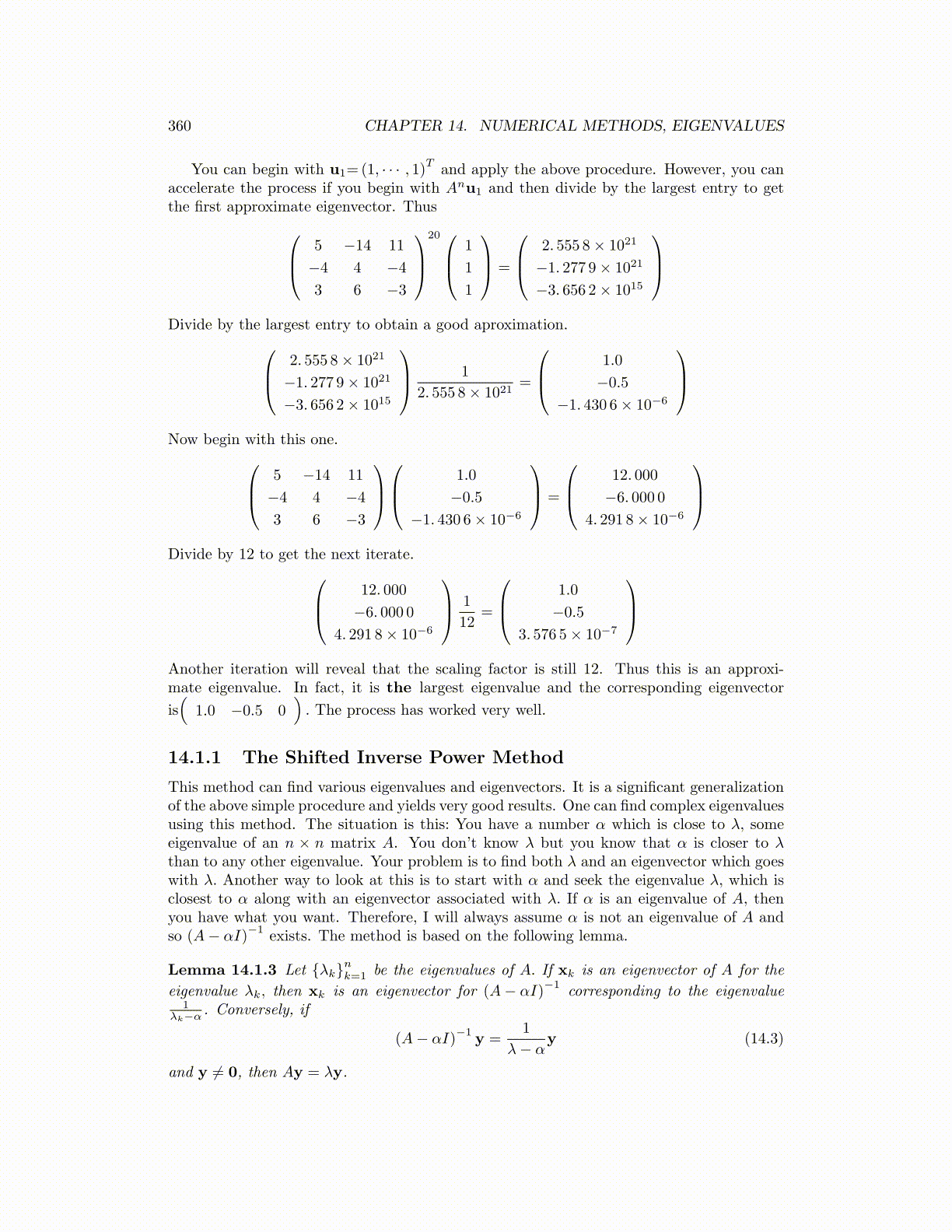
360 CHAPTER 14. NUMERICAL METHODS, EIGENVALUES
You can begin with u1=(1, · · · , 1)T and apply the above procedure. However, you canaccelerate the process if you begin with Anu1 and then divide by the largest entry to getthe first approximate eigenvector. Thus 5 −14 11
−4 4 −4
3 6 −3
20 1
1
1
=
2. 555 8× 1021
−1. 277 9× 1021
−3. 656 2× 1015
Divide by the largest entry to obtain a good aproximation. 2. 555 8× 1021
−1. 277 9× 1021
−3. 656 2× 1015
1
2. 555 8× 1021=
1.0
−0.5
−1. 430 6× 10−6
Now begin with this one. 5 −14 11
−4 4 −4
3 6 −3
1.0
−0.5
−1. 430 6× 10−6
=
12. 000
−6. 000 0
4. 291 8× 10−6
Divide by 12 to get the next iterate. 12. 000
−6. 000 0
4. 291 8× 10−6
1
12=
1.0
−0.5
3. 576 5× 10−7
Another iteration will reveal that the scaling factor is still 12. Thus this is an approxi-mate eigenvalue. In fact, it is the largest eigenvalue and the corresponding eigenvector
is(
1.0 −0.5 0). The process has worked very well.
14.1.1 The Shifted Inverse Power Method
This method can find various eigenvalues and eigenvectors. It is a significant generalizationof the above simple procedure and yields very good results. One can find complex eigenvaluesusing this method. The situation is this: You have a number α which is close to λ, someeigenvalue of an n × n matrix A. You don’t know λ but you know that α is closer to λthan to any other eigenvalue. Your problem is to find both λ and an eigenvector which goeswith λ. Another way to look at this is to start with α and seek the eigenvalue λ, which isclosest to α along with an eigenvector associated with λ. If α is an eigenvalue of A, thenyou have what you want. Therefore, I will always assume α is not an eigenvalue of A andso (A− αI)
−1exists. The method is based on the following lemma.
Lemma 14.1.3 Let {λk}nk=1 be the eigenvalues of A. If xk is an eigenvector of A for the
eigenvalue λk, then xk is an eigenvector for (A− αI)−1
corresponding to the eigenvalue1
λk−α . Conversely, if
(A− αI)−1
y =1
λ− αy (14.3)
and y ̸= 0, then Ay = λy.